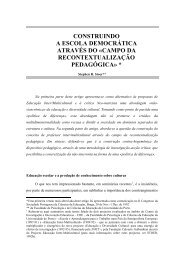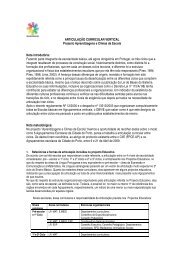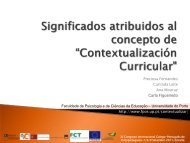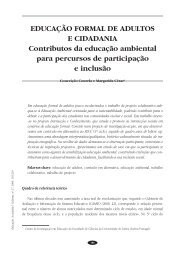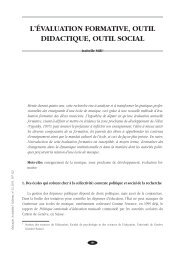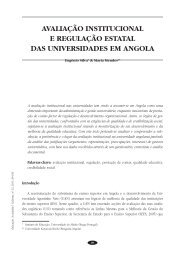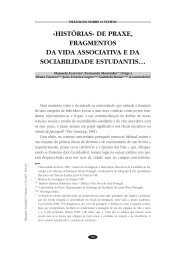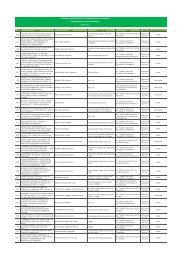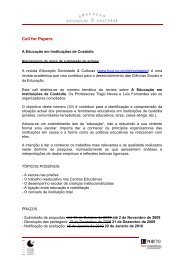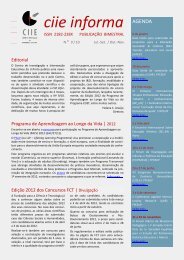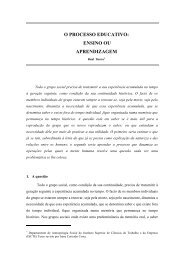REFLECTINGON AN ACADEMIC PRACTICE TOBOOST GENDER ...
REFLECTINGON AN ACADEMIC PRACTICE TOBOOST GENDER ...
REFLECTINGON AN ACADEMIC PRACTICE TOBOOST GENDER ...
Create successful ePaper yourself
Turn your PDF publications into a flip-book with our unique Google optimized e-Paper software.
Conclusion: what do we bring with us?The space of conclusion is always somehow disquieting, and even become a little paradoxicalwhen it is referred to a tale of an ongoing process. We probably can offer more questionsthan answers and we are particularly more thirsty for knowledge and desirous of commentsand debate that convinced to be able to present any clear result.However, for the sake of stimulating the debate, it is useful to shortly summarize andhighlight some outcomes of the experienced, some of which we are still evaluating and someof the weakness of the kind of work we proposes here.Firstly, we confirm, in our specific context of study, what many feminist researchers havebeen argued: girls tend to reproduce gender stereotypes and find extremely difficult to identifyits significance in their own life. In fact, although young people generally recognize thatthe existence of some structural gender discrimination (salary, political recognition, etc.) andgender violence are still social problems, they tend to consider those phenomena as alien totheir everyday life. Political correctness and allegedly liberating media models of masculinizedfemininities tend to make them consider sexism: as a legacy of the past; as a problem of«other» (inferior) cultures/religions; as something basically experienced by uneducated (againinferior) women; or, at least, as a particular experience they may face at some point of theirlife, but that they will have no problem to solve. Moreover, as expressed in the text, the disqualificationof feminism, the ideal of being individual, the lack of a gender perspective ineducation play an important role in that sense…We have also experienced that the resistance to that recognition may be particularly strongin a period of life, the entrance in the adulthood, when it is important to present ourselves asself-confident and without contradictions. That may be even stronger when you are asked toexpose yourself by an adult that, formally in charge of evaluating you, in front of a group ofpairs with whom you have to share many times in the next years. In our opinion, that has tobe carefully taken in consideration and specifically addressed when using students’ personalreflexive approach in working on gender issues.Actually, through that analysis, we became aware of an important difference between ourexperience and the one explained, for example, in Naples and Bojar (2002): timing, space, anddimensions. Many doubts arise related to the extreme difficulty of fulfilling a work of that kind,with the required care and sensibility, in a class of forty people, in the context of an extremelybig topic, having to follow a huge content curriculum and without the option of creating aclearly separate space from evaluation.Therefore, despite trying to improve practical tools to be used to help students to developa gender perspective analysis, we agree with Ana Sanchéz Bello 11 and with McLeod (1998)122



